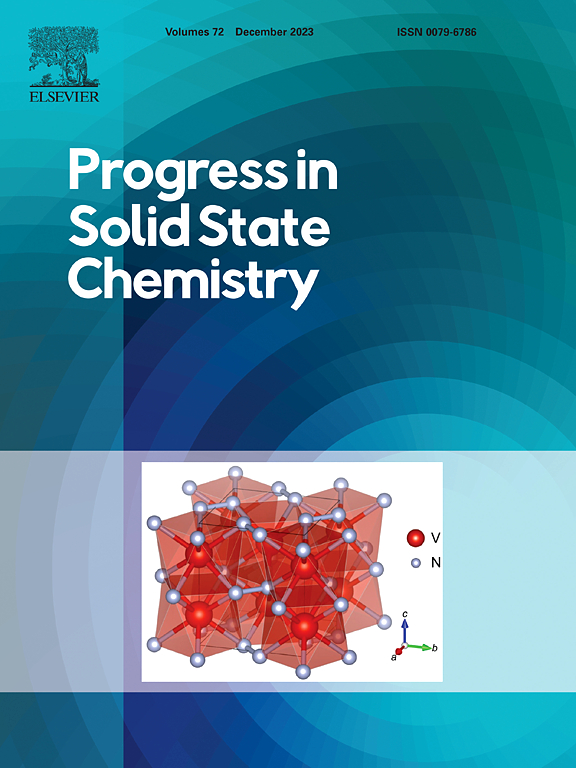Quaternary transition metal dichalcogenides (M1-xNxX2(1-y)Y2y) for hydrogen evolution: A review on atomic structure, 3D engineering, and electrocatalytic performance
IF 10.5
2区 化学
Q1 CHEMISTRY, INORGANIC & NUCLEAR
引用次数: 0
Abstract
Hydrogen is a clean, efficient, and sustainable alternative to fossil fuels, placing it at the forefront of our energy future. Water electrolysis is more sustainable and eco-friendlier alternative to fossil fuel-based hydrogen production processes. The earth abundance, low cost, high electrocatalytic activities, and stabilities of transition metal dichalcogenides (TMDs) in the hydrogen evolution reaction (HER) set them apart as exceptional electrocatalysts for hydrogen production. Quaternary TMDs have a general formula of M1-xNxX2(1-y)Y2y, where M and N are transition metals and X and Y are chalcogens. Thus, quaternary TMDs are versatile nanomaterials that exhibit tremendous potential for fine-tuning and optimizing their electrocatalytic performance through composition modulation, as shown by both theoretical and experimental studies. Additionally, additive manufacturing techniques such as 3D printing are emerging as powerful tools for fabricating structurally complex, compositionally tunable TMD-based electrodes with enhanced HER performance. The integration of 3D printing with advanced TMD synthesis methods enables the design of customized electrocatalysts, offering improved charge transport and catalytic activity for sustainable hydrogen production. To delve deeper into the composition-structure-activity relationships that govern the hydrogen evolution performance of quaternary TMDs, this review encapsulates a comprehensive account of the synthesis methods, atomic and electronic structures, properties, and electrocatalytic performance of quaternary TMDs. Furthermore, the unique challenges in using quaternary TMD electrocatalysts and the authors' perspective on their future potential in hydrogen production are elaborated.

四元过渡金属二硫族化合物(M1-xNxX2(1-y)Y2y)析氢:原子结构、三维工程和电催化性能综述
氢是一种清洁、高效和可持续的化石燃料替代品,将其置于我们未来能源的最前沿。水电解是比化石燃料制氢工艺更可持续、更环保的替代品。在析氢反应(HER)中,过渡金属二硫族化合物(TMDs)具有丰富的稀土元素、低廉的成本、较高的电催化活性和稳定性,是一种特殊的制氢电催化剂。四元tmd的通式为M1-xNxX2(1-y)Y2y,其中M和N为过渡金属,X和Y为硫元。因此,理论和实验研究表明,四元tmd是一种多功能纳米材料,具有通过组成调制微调和优化其电催化性能的巨大潜力。此外,3D打印等增材制造技术正在成为制造结构复杂、成分可调、具有增强HER性能的tmd电极的强大工具。3D打印与先进的TMD合成方法的集成使定制电催化剂的设计成为可能,为可持续的氢气生产提供改进的电荷传输和催化活性。为了更深入地研究控制四元tmd析氢性能的组成-结构-活性关系,本文综述了四元tmd的合成方法、原子和电子结构、性质和电催化性能。此外,作者还阐述了使用四元TMD电催化剂的独特挑战,并对其在制氢方面的未来潜力进行了展望。
本文章由计算机程序翻译,如有差异,请以英文原文为准。
求助全文
约1分钟内获得全文
求助全文
来源期刊

Progress in Solid State Chemistry
化学-无机化学与核化学
CiteScore
14.10
自引率
3.30%
发文量
12
期刊介绍:
Progress in Solid State Chemistry offers critical reviews and specialized articles written by leading experts in the field, providing a comprehensive view of solid-state chemistry. It addresses the challenge of dispersed literature by offering up-to-date assessments of research progress and recent developments. Emphasis is placed on the relationship between physical properties and structural chemistry, particularly imperfections like vacancies and dislocations. The reviews published in Progress in Solid State Chemistry emphasize critical evaluation of the field, along with indications of current problems and future directions. Papers are not intended to be bibliographic in nature but rather to inform a broad range of readers in an inherently multidisciplinary field by providing expert treatises oriented both towards specialists in different areas of the solid state and towards nonspecialists. The authorship is international, and the subject matter will be of interest to chemists, materials scientists, physicists, metallurgists, crystallographers, ceramists, and engineers interested in the solid state.
 求助内容:
求助内容: 应助结果提醒方式:
应助结果提醒方式:


